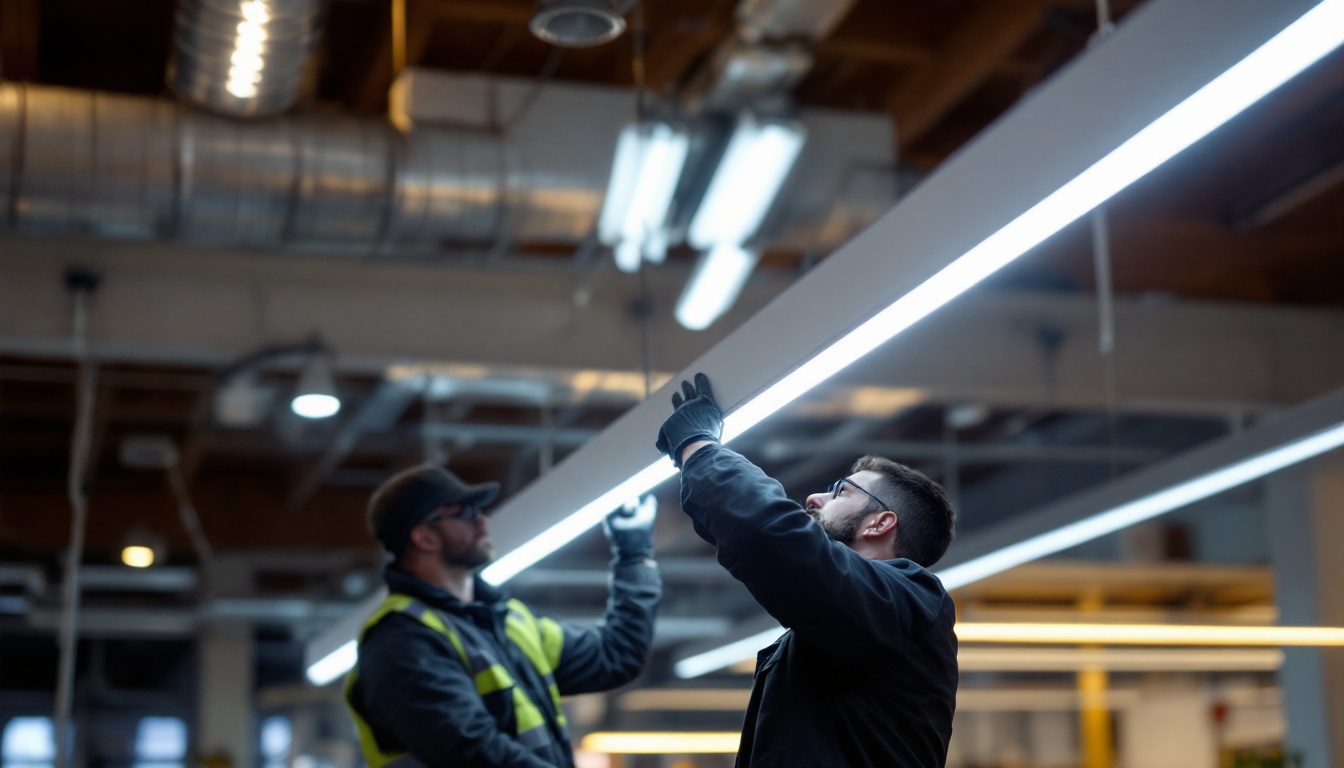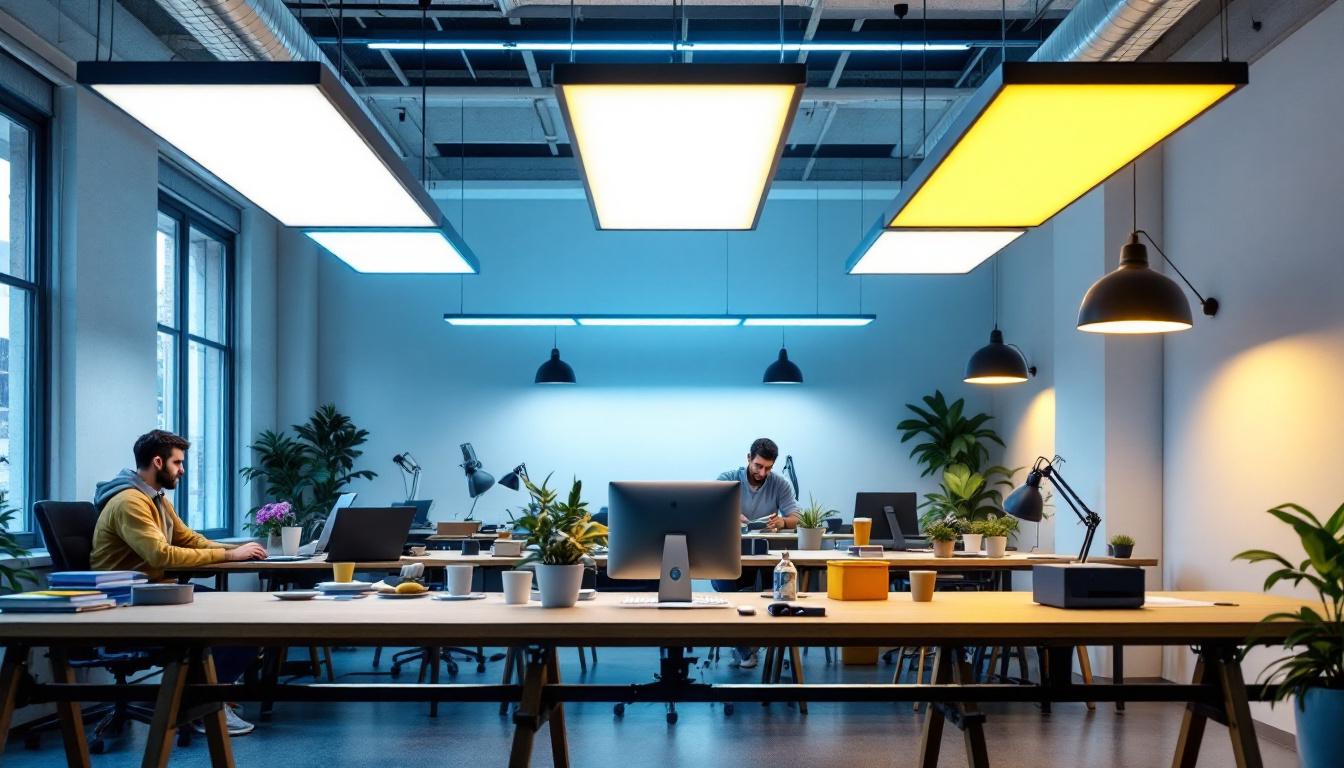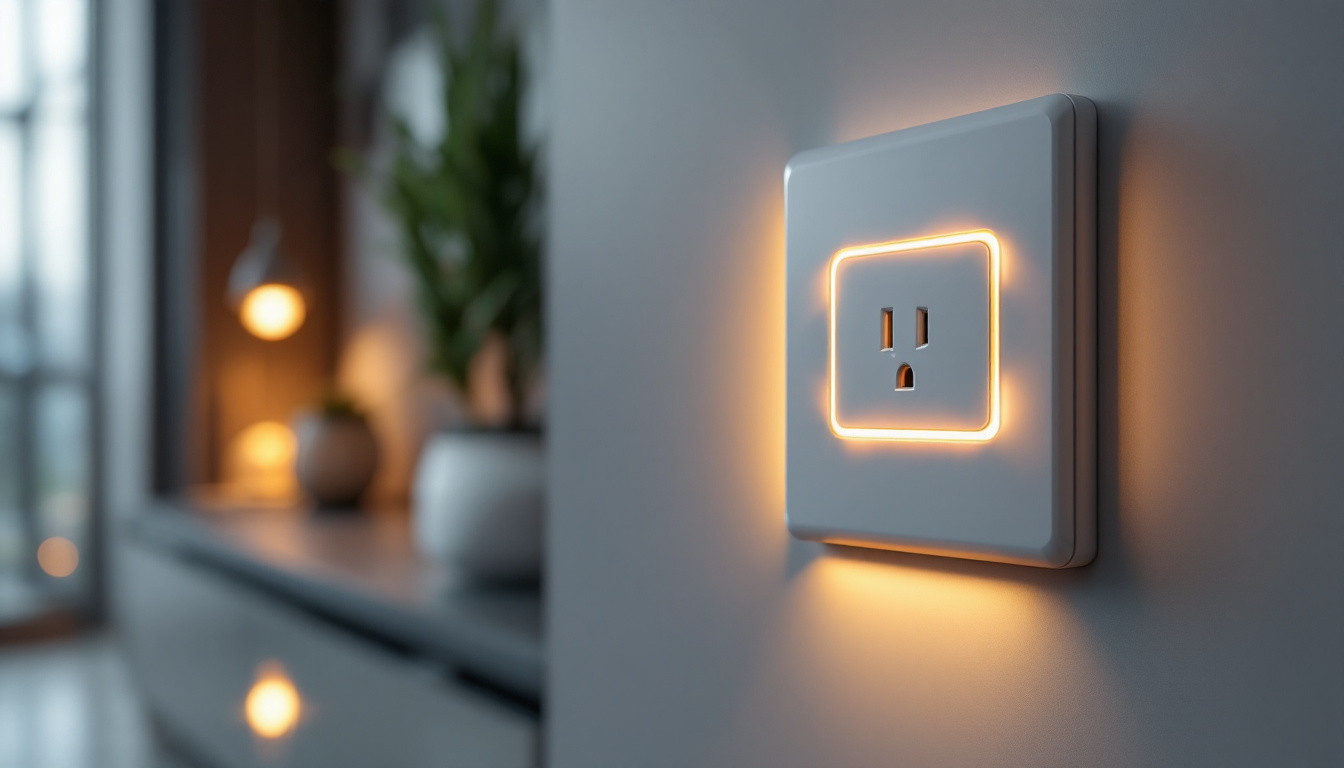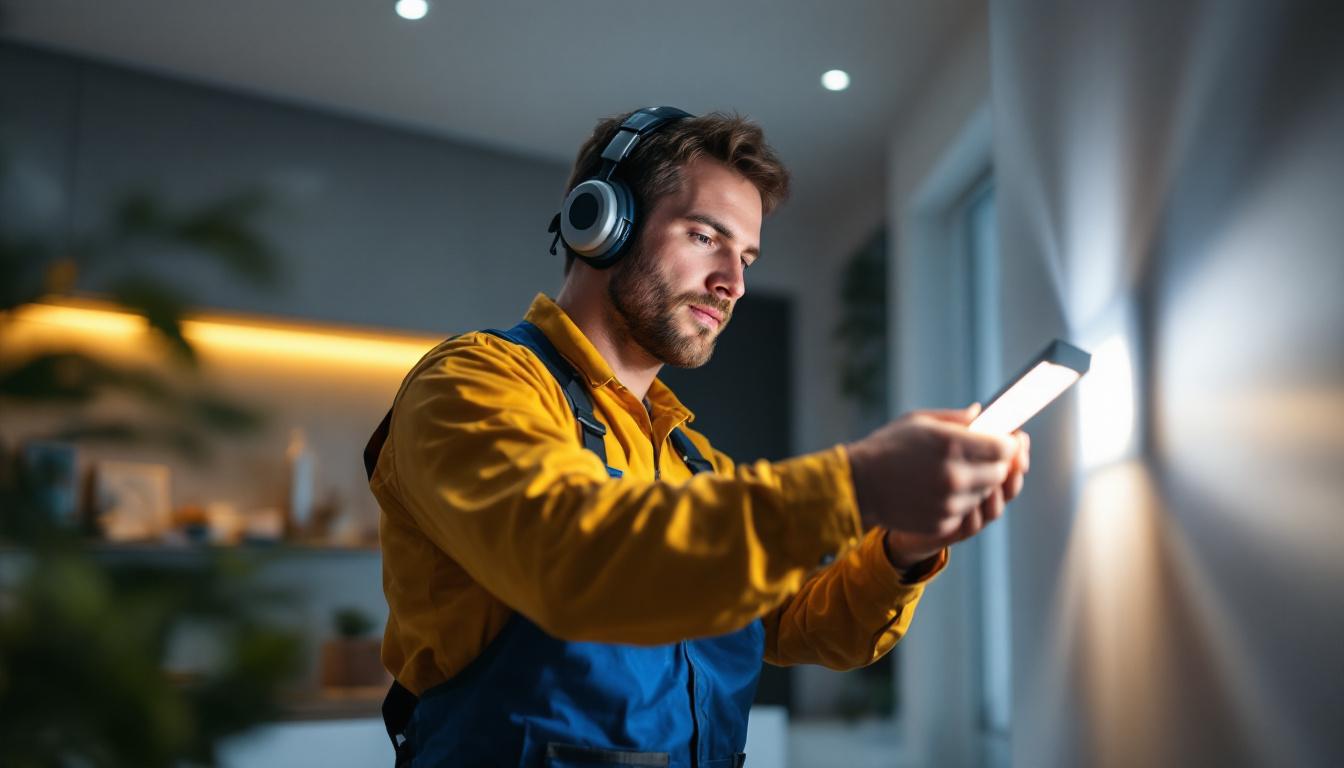
In the world of commercial and industrial lighting, fluorescent high-output (HO) light fixtures have become a staple due to their energy efficiency and superior illumination capabilities. For lighting contractors, understanding the intricacies of these fixtures is essential for delivering optimal results to clients. This article delves into best practices for installing and maintaining fluorescent HO light fixtures, ensuring that contractors can provide high-quality service while maximizing the benefits of this lighting technology.
Fluorescent HO light fixtures are designed to provide a higher lumen output than standard fluorescent lights, making them ideal for large spaces such as warehouses, retail stores, and manufacturing facilities. They operate using a gas-filled tube that emits ultraviolet light when an electric current passes through it. This ultraviolet light then excites a phosphor coating on the inside of the tube, producing visible light.
One of the most notable features of fluorescent HO light fixtures is their energy efficiency. Compared to traditional incandescent bulbs, they consume significantly less power while providing a brighter light output. Additionally, these fixtures have a longer lifespan, often lasting up to 20,000 hours or more, which reduces the frequency of replacements and maintenance costs.
Another important aspect is their versatility. Fluorescent HO fixtures come in various sizes and configurations, allowing contractors to choose the right model for specific applications. Whether it’s a high bay fixture for a warehouse or a surface-mounted option for a retail space, there’s a fluorescent HO fixture suitable for nearly every setting.
Fluorescent HO light fixtures are commonly used in a variety of applications. In industrial settings, they provide bright, even lighting that enhances visibility and safety. In retail environments, these fixtures can highlight merchandise effectively, creating an inviting atmosphere for customers. Additionally, they are often employed in educational institutions, where consistent lighting is crucial for both learning and comfort.
Beyond these typical applications, fluorescent HO fixtures are increasingly being utilized in specialized environments such as laboratories and healthcare facilities. In labs, the bright and even illumination is essential for precision work, enabling scientists to conduct experiments with accuracy. In healthcare settings, proper lighting is critical for patient care and examination rooms, where visibility can significantly impact diagnosis and treatment. Furthermore, with advancements in technology, many fluorescent HO fixtures now come equipped with dimming capabilities and smart controls, allowing for customizable lighting solutions that cater to the specific needs of each environment.
Moreover, the environmental impact of fluorescent HO fixtures is worth noting. As energy-efficient lighting options, they contribute to reduced energy consumption, which can lead to lower greenhouse gas emissions. Many businesses are now focusing on sustainability, and the adoption of these fixtures aligns with their goals to minimize their carbon footprint. Additionally, recycling programs for fluorescent lights are becoming more prevalent, ensuring that the materials used in these fixtures are disposed of responsibly and do not contribute to landfill waste.
Proper installation of fluorescent HO light fixtures is critical to ensure optimal performance and longevity. Lighting contractors must adhere to best practices during the installation process to avoid common pitfalls and ensure safety.
Before installation, a thorough site assessment is essential. This involves evaluating the space to determine the appropriate number of fixtures needed, their placement, and the type of fixtures that will best serve the area. Factors such as ceiling height, existing lighting, and the specific tasks performed in the space should all be considered.
Contractors should also take into account the electrical infrastructure of the building. Ensuring that the circuit can handle the additional load of the new fixtures is crucial to prevent overloads and potential hazards.
When it comes to mounting fluorescent HO fixtures, there are several techniques that contractors can employ. For high bay applications, fixtures should be mounted at the appropriate height to maximize light distribution. This often involves using suspension chains or brackets that allow for adjustments based on the specific needs of the space.
Surface-mounted fixtures should be installed securely to avoid any risk of falling. Using appropriate anchors and fasteners is vital, especially in environments where vibrations or movement may occur. Additionally, ensuring that fixtures are level will not only improve aesthetics but also enhance light distribution.
Electrical connections must be made with precision and care. Contractors should follow local electrical codes and manufacturer instructions to ensure safe and reliable operation. Properly connecting the ballast, which regulates the current to the fluorescent tubes, is particularly important for the fixture’s performance.
It’s also advisable to use high-quality wiring and connectors to minimize the risk of electrical failures. Regularly inspecting connections during maintenance can help identify potential issues before they escalate into more significant problems.
Regular maintenance is crucial for ensuring that fluorescent HO light fixtures continue to operate efficiently over their lifespan. Lighting contractors should establish a maintenance schedule that includes routine inspections and cleaning.
Dust and dirt can accumulate on fixtures, diminishing their light output over time. Cleaning the fixtures regularly helps maintain optimal performance. Using a soft cloth or a non-abrasive cleaner can effectively remove grime without damaging the fixture’s surface.
Contractors should also clean the fluorescent tubes themselves. This can be done by gently wiping them with a damp cloth to remove any dust that may have settled on the glass. However, care must be taken to avoid any moisture getting into the electrical components.
Over time, components such as bulbs and ballasts may need to be replaced. Contractors should be familiar with the signs that indicate a component is failing, such as flickering lights or inconsistent brightness. Promptly addressing these issues not only ensures continued performance but also enhances safety.
When replacing bulbs, it’s essential to use the correct type and wattage as specified by the manufacturer. Using incompatible components can lead to further issues and may void warranties.
Conducting energy efficiency audits can help identify opportunities for improvement in lighting systems. By analyzing energy consumption patterns, contractors can recommend upgrades or modifications that enhance efficiency and reduce costs for clients.
Implementing energy-efficient solutions, such as installing occupancy sensors or integrating LED technology, can significantly lower energy bills and improve overall lighting quality. Contractors should stay informed about the latest advancements in lighting technology to provide clients with the best options available.
Safety is paramount when working with electrical systems and lighting fixtures. Lighting contractors must adhere to strict safety protocols to protect themselves and their clients during installation and maintenance.
Wearing appropriate personal protective equipment (PPE) is essential when working with fluorescent HO light fixtures. This includes safety glasses, gloves, and hard hats, especially in industrial environments where hazards may be present.
Contractors should also ensure that they are using tools that are in good condition and appropriate for the tasks at hand. Regularly inspecting tools for wear and tear can prevent accidents and injuries.
Before starting any work, it is critical to turn off the power to the circuit that will be worked on. Lockout/tagout procedures should be followed to ensure that the power cannot be accidentally turned back on while work is being conducted.
Understanding the electrical codes and regulations in the area is also essential. Contractors should stay updated on any changes to these codes to ensure compliance and safety.
Selecting the appropriate fluorescent HO light fixtures for a specific application can significantly impact the effectiveness of the lighting solution. Contractors should consider several factors when making their selections.
There are various types of fluorescent HO fixtures available, including linear, recessed, and surface-mounted options. Each type has its advantages and is suited for different applications. For example, linear fixtures are ideal for long, narrow spaces, while recessed fixtures can provide a more aesthetically pleasing look in retail environments.
Contractors should also consider the color temperature of the bulbs. Different color temperatures can create different atmospheres; warmer temperatures are often preferred in retail settings, while cooler temperatures are better suited for industrial applications where visibility is paramount.
When selecting fixtures, looking for Energy Star-rated products can help ensure energy efficiency. These fixtures meet strict guidelines for energy consumption and performance, providing clients with cost-effective solutions that also benefit the environment.
Additionally, Energy Star-rated fixtures often qualify for rebates and incentives, making them an attractive option for cost-conscious clients. Contractors should be knowledgeable about available incentives to help clients maximize their savings.
Fluorescent HO light fixtures offer a reliable and efficient lighting solution for a variety of applications. By adhering to best practices in installation, maintenance, and safety, lighting contractors can ensure that they provide high-quality service to their clients.
Understanding the nuances of these fixtures, from their features and applications to the latest advancements in technology, empowers contractors to make informed decisions that enhance the overall lighting experience. As the lighting industry continues to evolve, staying updated on best practices and innovations will be key to maintaining a competitive edge.
In conclusion, the effective use of fluorescent HO light fixtures not only improves visibility and safety but also contributes to energy savings and sustainability. By implementing the best practices outlined in this article, lighting contractors can deliver exceptional results that meet the needs of their clients while fostering a brighter, more efficient future.
Ready to elevate your lighting game? Look no further than LumenWholesale for all your fluorescent HO light fixture needs. As a dedicated partner to lighting contractors, we provide spec-grade lighting products that combine quality and affordability. Say goodbye to local distributor markups and hello to our unbeatable wholesale prices. With our commitment to excellence and hassle-free bulk buying, you’ll enjoy free shipping and the best value in lighting solutions. Don’t compromise on performance or price. Wholesale Lighting at the Best Value is just a click away. Experience the LumenWholesale difference today!

Discover why 8′ LED light fixtures are essential for any successful lighting project.

Discover the innovative strategies employed by smart lighting contractors in modernizing electric outlets.

Discover the key insights lighting contractors need to meet client expectations with Type S LED lighting.

Discover the top strategies lighting contractors use for ceiling mount light fixtures.